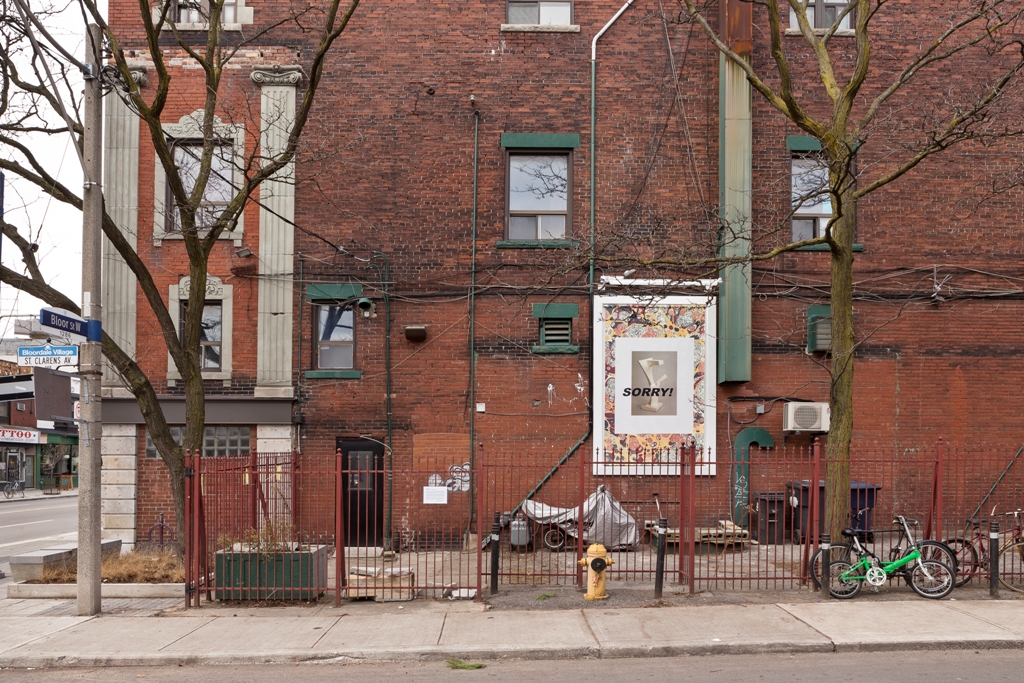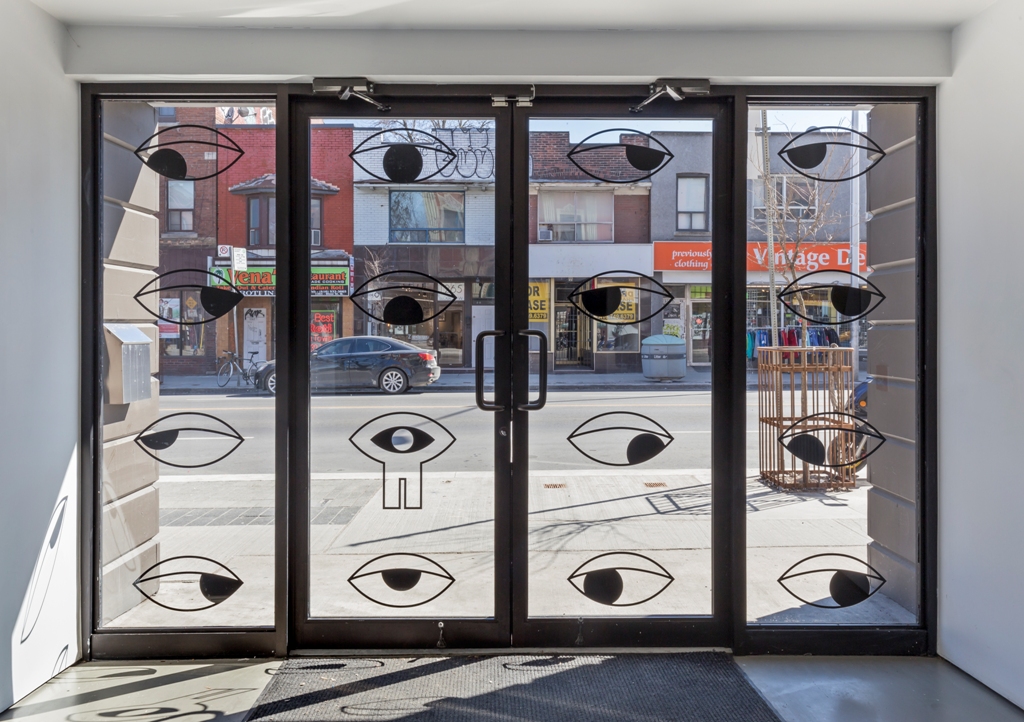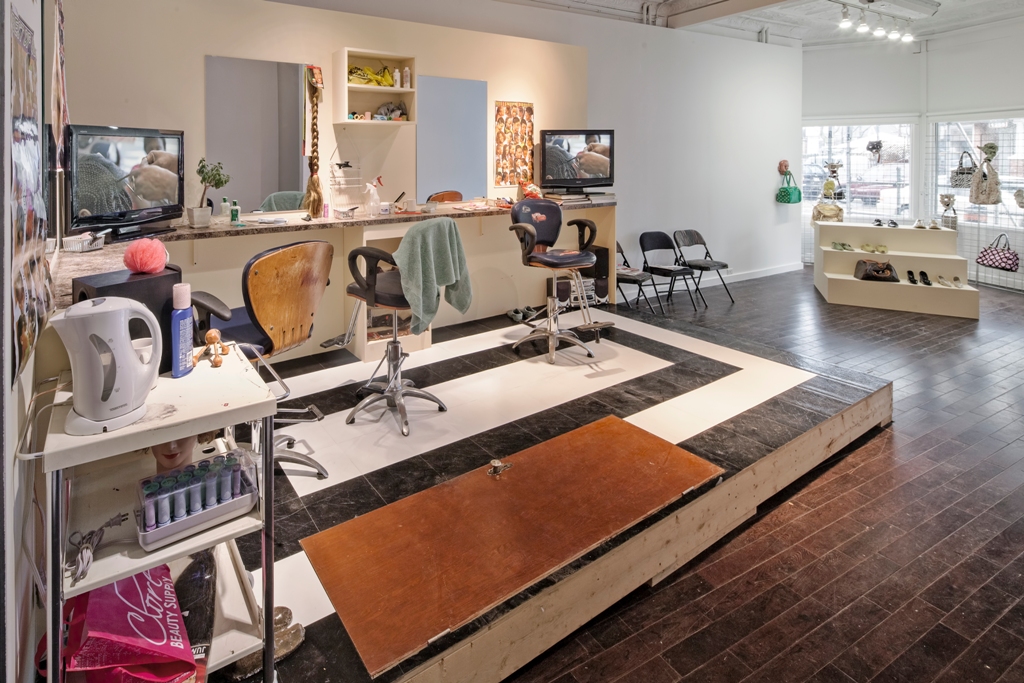
Toronto Observed

Toronto has been dubbed the most multicultural city in the world. This diversity may be why its art scene is less easily grasped than elsewhere.
When I moved back to Toronto from Amsterdam a year ago, I came armed with generalizations about the art scene I was to encounter: circuitous, unadventurous, isolated. Peers would say, Oh, Toronto, I’d like to go, but I’ve never had a reason to. Ex-pat Torontonians questioned my decision; Toronto has suffered its fair share of brain drain, mostly south, to New York and Los Angeles. Why go back? I returned with ambivalence. In Amsterdam, the intense circulation of bodies and artworks was energizing: artists, writers and curators were always passing through; the city’s art scene re-enlivened yearly by unusually international art and curatorial programs. We don’t have that movement in Toronto. People stay or they go, but Vancouver is $600 round-trip flight and New York an 8-hour drive. It is the country’s largest city, its economic capital, and the fourth most populous city in the North America. But, as an artist told me last night at yet another opening, it is only very recently that one feels an art career can once again be fulfilling in Toronto. We don’t have to go elsewhere anymore.
Toronto has been dubbed the most multicultural city in the world. Here there are always a range of possible narratives – still dominant ones, but a range nevertheless. This diversity may be why Toronto’s art scene is less easily grasped than others. There are those that are most visible; this tier occupied by a group of commercial galleries, the art museum – the Art Gallery of Ontario – and the kunsthalle-style Power Plant Gallery. But at present, the Toronto art market is overwhelmingly cautious, with some exceptions, and what should be the city’s shining star, the Power Plant, suffers visibly from internal politics. The most interesting work is happening in smaller project spaces and pop-ups.
The best contemporary art is happening in quiet corners in Toronto: in a few well-loved artist-run centres; in semi-private reading groups and small discussions; in monthly low-brow, high-entertainment comedy/performance variety shows
I think Toronto’s art scene has for quite some time exceled in the margins. The city’s artistic lineages are less direct, less easily identifiable than one might expect in a major centre – possibly because many successful artists leave. One has to look closely to find the roots of the current artistic community. One of the city’s true visionaries, however, would be Ydessa Hendeles. Hendeles is a brilliant curator, collector and narrator, whose exhibitions at her eponymous, recently shuttered art foundation were world-renowned though always under the mainstream radar. She made her audience work for their rewards, which were ultimately plentiful. The exhibitions at the foundation were densely layered, often with historical, vernacular objects outside the usual purview of contemporary art exhibitions, and they were never explained away: she would provide the necessary information, introduce unorthodox, provocative pairings, and then allow meaning to unfold on the part of the viewer. She carved out her own private institutional path, outside of the public or commercial spaces one usually looks to for a city’s best contemporary art.
Hendeles’ curatorial abilities are anomalous, and her institutional presence is sorely missed in Toronto. But what I did find upon returning last year is a landscape of independent spaces run by women. Last week I participated in a poetry session with an inordinately talented 22-year-old writer, Fan Wu, organized by one of the city’s brightest curatorial minds, cheyanne turions. It was a low-key situation – only 8 can fit in a sauna – but intimate, hospitable and challenging in the way that one wants art experiences to be. The session took place in the courtyard of 8-11, a collectively run project space in Toronto’s Chinatown. Headed by a shifting collective between 8 and 11 artists, curators and musicians, 8-11 has, in its year of existence, filled a void in the city. Xenia Benivolski, an independent curator and one of the founding members, has been leading a tightly curated program of young artists from Toronto, Montreal and New York, offering a truly energetic project space.
Operating with a sense of collective politics, a commitment to the most promising nascent careers, and a willingness to experiment, 8-11 feels like the stories one hears of the beginnings of Canada’s legendary network of artist-run centres in the 1960s and 70s. Frustrated by the lack of exhibition opportunities for contemporary art in the museums and the sense of isolation felt between Canadian cities, artists at the time began initiating their own institutions, meant to foster new connectivity across Canada and internationally. Many of these artist-run centres still exist, but most have been slowly diluted, working with impossibly tight budgets, bloated programming committees, and an increasing disconnect from the outside world.


Art Metropole, Gallery TPW and Mercer Union are the three remaining artist-run centre luminaries in Toronto – non-profit institutions that have retained their founding values, survived the bureaucratic meltdown of many other artist-run galleries, and continue to deliver rigorous local, national and international projects. Art Metropole, founded in 1974 by General Idea, has been an international destination for artists’ publications and writing by artists for forty years; a recent highlight was a writing workshop led by Pittsburgh-based artist Cara Siik Benedetto, in which participants watched Barbara Loden’s Wanda and then were asked to write a the script for an extended pick-up line. Benedetto later read from her excellent new erotic artist’s novel, The Coming of Age.
Mercer Union, founded in 1979, has been consistently commissioning significant solo projects by emerging and mid-career artists. The current artistic director and curator Georgina Jackson came from Dublin after finishing a PhD in curatorial practice. Recent program highlights include projects with Geoffrey Farmer, Jacqueline Hoang Nguyen, Tiziana La Melia and Laurent Montaron, and new commissions from Liz Magic Laser and Abbas Akhavan are forthcoming. Jackson has also introduced the popular Forum series, in which writers, poets and critics speak about their work. The series offers a recurring means through which to re-evaluate the role of language in the art institution. Next month’s edition is a highly-anticipated co-reading from poet Lisa Robertson and artist Hadley Howes.
Gallery TPW operates with a focus on image-based arts, under the curatorial guidance of Kim Simon. Simon’s program places emphasis on discourse, inviting others to collectively discuss and provoke the status and limits of the image. Closed for an extended period while searching for a new building, Gallery TPW became TPW R&D, renamed as a centre for research and development. During this low-profile phase, the gallery hosted frequent lectures, performances, workshops and single-work exhibitions by artists and writers including Charles Stankievech, Ariana Reines, Wu Tsang, Tris Vonna-Michell, Bridget Moser and Nadia Belerique. The gallery re-opens in a new, renovated space at the end of April 2015 and will begin programming full-scale exhibitions again.
Also on the discursive front, Jacob Korczynski independent curator and former researcher for the Amsterdam-based performance platform If I Can’t Dance I Don’t Want To Be Part Of Your Revolution, has been upholding a Toronto presence for program, with infrequent reading groups loosely affiliated to the If I Can’t Dance’s yearly research themes. On occasion, he partners with No Reading After The Internet, another nomadic reading salon initiated by cheyanne turions that often crops up in relation to exhibitions and contemporary art projects.
To my mind, one noticeable gap in the city’s contemporary art institutions is in sustained support for performance art, and once again one has to look beyond the city’s surface to find it. In this case, down an alleyway in Kensington Market to Double Double Land – the interdisciplinary venue that hosts Doored, a monthly comedic performance variety show emceed by performance artists Life of a Craphead. Over the past two years, Doored has been fostering a new audience for a particular kind of performance art that uses the elements and structure of stand-up comedy. Still, one sees little commitment to performance art in Toronto’s exhibition spaces. The city’s major art museum, the Art Gallery of Ontario, has however, recently been featuring more performance, with projects by Ame Henderson, Ragnar Kjartansson and Ei Arakawa in the past few months, and Karl Holmqvist on the horizon. It is a welcome and overdue movement away from the object fetishism that often characterizes Toronto’s visual arts.
The best contemporary art is happening in quiet corners in Toronto: in a few well-loved artist-run centres, in backyard saunas of galleries in hundred-year-old former watch shops; in semi-private reading groups and small discussions; in monthly low-brow, high-entertainment comedy/performance variety shows. The art community in Toronto often grapples with staying or leaving; there complaints about provincialism, the over-abundance of male painters, the Canadian-centric bias of gallerists and collectors, the lack of a functional kunsthalle. It’s true that there is work to be done, but it’s also true that everything you’re looking for is happening somewhere, tucked away. The independents are doing just fine.
Kari Cwynar is a curator and writer from Toronto, she is director of Kunstverein Toronto and associate editor of C Magazine
THIS ARTICLE WAS PUBLISHED IN A DUTCH TRANSLATION IN METROPOLIS M No 3-2015
METROPOLIS M ZOEKT LEDEN DIE HET ABONNEEBESTAND KOMEN VERSTERKEN. WORD ABONNEE EN KRIJG METROPOLIS M HET EERSTE JAAR VOOR 40 EURO (ZES NUMMERS). MELD JE HIER AAN. DAN STUREN WE JE NUMMER 4-2015 + DE EINDEXAMENBIJLAGE DIRECT OP
Kari Cwynar


